英语北师大版七年级下册课文目录
Grammar Summary课文翻译及听力音频
Grammar Summary 翻译:语法总结
Adverbs of Frequency 频度副词 翻译:
频度副词是表示频繁程度的副词,可以回答How often ...?提出的问题。常用的频度副词有:always, usualy, often, sometimes, seldom, never ( 按频度从高至低排列)。例如: Usually /Sometimes, I wear black, grey or brown. Grandma tells me about her childhood usually /sometimes. I always / usually / sometimes / often / seldom / never read books after 7 pm. 翻译:
The Present Simple 一般现在时 翻译:
Uses用法 一般现在时表示: 经常发生或反复发生的动作。例如: He usually takes a walk after supper. 现在的情况或状态。例如: My father works in a bank. 客观事实或普遍真理。例如: The sun rises in the east. 翻译:
Form形式 1.当主语为第一人称、第二人称或者第三人称复数时,一般现在时的谓语动词用原形;当主语为第三人称单数时,动词需要使用第三人称单数形式。动词第三人称单数变化规则如下: 一般情况下直接加-s。例如: work - works drive - drives play - plays run - runs 以o,s, x, ch, sh结尾的动词后加-es。例如: do - does miss - misses catch - catches push - pushes 以“辅音字母+ y”结尾的动词,先变y为i,再加-es。例如: cry-cries fly - fies hurry - hurries study - studies 一般现在时的否定句和疑问句用do/does和do not / does not加动词原形表示。例如: I do not (don't) have a car. Does he wear a hat? What do they want to do? 2.动词be的一般现在时因不同人称而使用am,is, are三种形式。 翻译:
一般现在时及其时间状语 一般现在时常与下列时间状语连用: 频度副词always, usally, often, seldom, sometimes, never等。例如: He often plays tennis after school. Once, twice, three times... a day / week / month / year, every day / week / month / year / morning / afternoon / evening / night... , on Mondays / Wednesdays..., at weekends等短语。这类副词和副词短语通常位于句首或句尾。例如: They play football twice a week. 翻译:
3 The Present Continuous 现在进行时 翻译:
Uses 用法 现在进行时表示: 现在正在进行的动作。例如: They are listening to the music. Why are you sitting at my desk? 现阶段正在进行的动作。例如: -What is your daughter doing these days? - She is learning to drive. 表示按计划、安排将要发生的动作。例如: He is coming to see you tomorrow. 表示经常性的动作。通常与always等副词连用,表达某种情感色彩。例如:She is always helping others. (表示赞扬) 翻译:
Uses 用法 现在进行时表示: 现在正在进行的动作。例如: They are listening to the music. Why are you sitting at my desk? 现阶段正在进行的动作。例如: -What is your daughter doing these days? - She is learning to drive. 表示按计划、安排将要发生的动作。例如: He is coming to see you tomorrow. 表示经常性的动作。通常与always等副词连用,表达某种情感色彩。例如:She is always helping others. (表示赞扬) 翻译:
Form形式 1.现在进行时由助动词am, is, are加动词的现在分词构成。 肯定句: I'm (am) walking on the road. We / You / They're (are) walking on the road. He / She / It's (is) walking on the road. 否定句: I'm not (am not) walking on the road. We / You / They are not (aren't) walking on the road. He / She / It is not (isn't) walking on the road. 一般疑问句: Are you / they walking on the road? Is he / she / it walking on the road? Yes, I am. Yes, we / they are. Yes, he / she / it is. No, I am not. No, we / they are not. No, he / she / it is not. 特殊疑问句: Where are you / they walking? Where is he / she / it walking? 翻译:
2.动词现在分词的变化规则。 一般动词在词后直接加-ing. 例如: go - going study - studying 以不发音的字母e结尾的动词:去掉e再加-ing。例如: live - living move - moving 以“元音字母+一个辅音字母”结尾,该音节又重读的动词:双写末尾辅音字母,再加-ing。例如: sit - sitting begin - beginning 现在进行时及其时间状语 常与现在进行时连用的时间状语有:now,at present, at the moment等。例如: I'm playing with my cousin now. 翻译:
4 Countable and Uncountable Nouns 可数名词和不可数名词 翻译:
英语中,名词分为可数名词和不可数名词。 1.可数名词指可用数目计数的名词。 可数名词一般有单数和复数两种形式。可数名词作单数使用时,前面可以加冠词a或an。例如: a watch - watches a house - houses 可数名词可以用数词修饰。例如: one room three apples 就可数名词的数量进行提问时,一般用How many...?例如: - How many classrooms are there in your school? -There are 32. 翻译:
2.不可数名词指不可用数目计数的名词。 不可数名词一般只有一种形式。例如: news music fun work 不可数名词不可以用a, an, another等限定词。 不可数名词可以用表示数量的短语修饰。例如: a piece of work a glass of milk 就不可数名词的量进行提问时,一般用How much ...?例如: 一How much water do you have? 一Just a bottle. 翻译:
5 The Future Simple 一般将来时 翻译:
Uses用法 一般将来时表示将要发生的事, 或将来某一段时间内经常进行的动作或状态。 翻译:
Form形式 一般将来时由助动词shall / will+动词原形, 或be going to+动词原形构成。 1 will, shall 肯定句 各种人称后都可以用will+动词原形构成将来时。will本身没有人称和数的变化,可以缩写为“’ll ”例如: I'm sure he'll (will) become a good doctor. 否定句: 直接在will后加not.例如: It won't (will not) be long before the rain stops. 疑问句 根据需要,将will提前,改变句子的语序。例如: 一Will you come tomorrow? 一Yes, I will./No, I won't. Who will come to our class tomorrow morning? shall用于第一人称后,常用于疑问句,表示征求对方的意见。例如: Shall I turn on the light? Shall we take a taxi? 翻译:
2.be going to be going to主要表达: 准备、打算做某事。例如: I'm going to clean my bedroom tonight. Where are you going to put the new TV? 依据现在的情况或迹象,预计要发生的事。例如: It is going to rain this afternoon. My aunt is going to have a baby. be going to的否定形式是在be动词后加not,疑问形式是将be动词提前。例如: I'm not going to throw it away. 一Are you going to visit your grandma this weekend? 一Yes,I am./No,I'm not. What are you going to do tomorrow? 翻译:
最新学习记录 更新时间:2025-12-05 18:34:43



 切换教材
切换教材